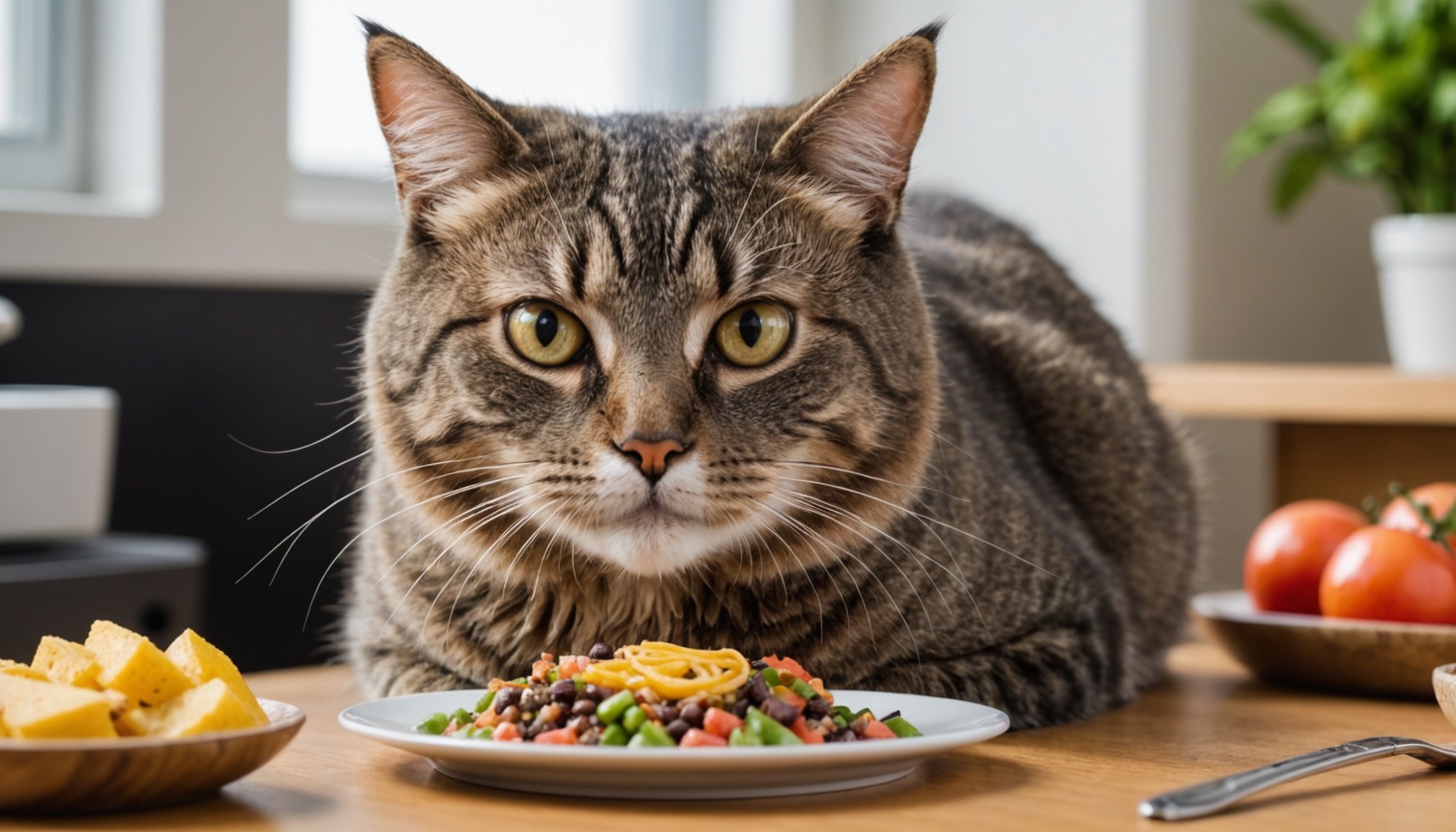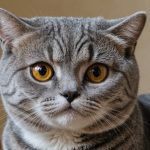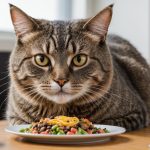Importance of Managing Your Cat’s Diet
Cat diet management is crucial for every pet owner who cares about their feline friend’s well-being. Cats, just like humans, require a balanced diet to maintain optimal health and prevent conditions like obesity. Feline obesity prevention should be a priority, as overweight cats face a higher risk of developing severe health issues such as diabetes, heart disease, and joint problems. Monitoring and controlling your cat’s dietary intake is the first step toward ensuring a long and healthy life for your beloved pet.
Diet plays a significant role in a cat’s overall health and longevity. Proper cat diet management ensures that your feline receives all essential nutrients, thereby supporting their immune system, energy levels, and organ function. A well-managed diet can also help prevent dental problems and promote a shinier coat and healthier skin.
Cela peut vous intéresser : Designing a Safe and Stimulating Sensory Garden for Blind Cats to Enjoy the Outdoors
The responsibility for shaping your cat’s eating habits lies primarily with you, the pet owner. It’s essential to provide the right portion sizes, choose high-quality cat food, and limit treats. Regular vet check-ups can offer guidance and help you adjust your cat’s diet as necessary. Staying informed and proactive can make all the difference in your pet’s quality of life.
Portion Control Strategies
Finding the right balance when it comes to portion control for cats involves understanding their specific feeding needs. Cats’ dietary requirements can vary based on weight, age, and activity levels. Precise feeding guidelines are crucial in ensuring your cat’s health and preventing obesity.
En parallèle : Essential Tips for Assisting Your Cat in Healing from Trauma
Understanding Recommended Serving Sizes
To determine the ideal serving size for your cat, consider both age and weight. Kittens generally need more frequent meals with increased calorie intake for growth. In contrast, adult cats require stable portions that match their activity level to maintain optimal health.
Techniques for Measuring and Monitoring
Accurate measurement is essential. Utilize kitchen scales to weigh the food, ensuring each serving aligns with the recommended portion size. This habit assists in monitoring intake and adjusts servings as required. Regularly observing your cat’s weight and condition helps in fine-tuning their meals.
Importance of Avoiding Free-Feeding Practices
Free-feeding—allowing cats constant access to food—can lead to overeating and obesity. Scheduled meals encourage cats to eat when food is provided, supporting better weight management. Structured feeding times allow for easier tracking of consumption and health habits, fostering your cat’s long-term wellbeing.
Selecting the Right Food
Choosing the right cat food is crucial for your feline friend’s health. Cats have unique dietary needs, and understanding cat food types is essential for ensuring a nutritional balance.
Understanding Cat Nutrition
Cats require specific nutrients for optimal health. Key nutrients include proteins, fats, and vitamins that support growth and energy. There are three main cat food types: dry, wet, and raw. Each offers distinct benefits. Dry food is convenient and helps with dental health, while wet food provides moisture, aiding hydration. Raw food is often closest to a cat’s natural diet but requires careful handling to avoid contamination. When considering commercial diets versus homemade meals, it’s important to ensure complete nutrition either way. Homemade meals can lack balance if not planned properly, whereas commercial diets often provide a more consistent nutritional profile.
Reading Labels and Ingredients
When assessing cat food quality, understanding labels is essential. Look for the AAFCO statement, which indicates nutritional adequacy. This information ensures the food meets basic dietary needs. Also, identify harmful ingredients like artificial preservatives and fillers. These can negatively impact your cat’s health over time.
Managing Treats and Extras
Treats should be given sparingly. Stick to the 10% rule, where treats make up no more than 10% of your cat’s diet. Consider nutritious alternatives like small amounts of cooked lean meat or commercial options catered specially for their nutritional value. Always monitor your cat’s overall caloric intake while indulging them.
Creating a Feeding Schedule
Implementing a cat feeding schedule is pivotal for maintaining your feline’s health and well-being. A structured feeding routine ensures your cat receives the right nutrients at appropriate times, helping to regulate their digestion and energy levels. By establishing consistent meal times, you can prevent overeating, reduce obesity risks, and monitor dietary intake effectively.
To develop a successful feeding routine, start by assessing your cat’s dietary needs, considering factors such as age, activity level, and health status. Typically, adult cats benefit from one or two meals a day, whereas kittens require more frequent feeding. Choose regular times to feed your cat and stick to these consistently, even on weekends or holidays, to foster a sense of routine.
It’s vital to recognize the signs of genuine hunger versus mere begging. Hunger is often accompanied by specific indicators such as meowing, restlessness, or even attempting to lead you to their food zone. On the contrary, begging might occur due to habit or boredom. Observing your cat’s patterns can aid in distinguishing between these cues and adjust the feeding schedule as necessary.
By following a routine feeding method, you also help your cat develop appropriate eating habits, decreasing their tendency toward food-related anxiety or disruptive behaviours.
Encouraging Exercise and Activity
Engaging your cat in regular exercise is essential for maintaining a healthy weight and overall well-being. Physical activity is crucial for weight management, preventing obesity-related health issues. But how can you keep your feline friend active, especially if they’re not naturally inclined to move around?
One effective engagement strategy is introducing a variety of interactive toys. Toys that mimic prey can stimulate your cat’s hunting instinct, making them chase, pounce, and bat—activities that contribute significantly to their daily exercise needs. Consider feather wands, laser pointers, or toys with unpredictable movements to keep their interest piqued.
For outdoor enthusiasts, a cat-friendly garden might provide the perfect playground. Cats enjoy exploring and climbing, so safe outdoor spaces can encourage natural activity. Indoors, you might create mini obstacle courses by repurposing cat trees, shelves, and perches to inspire climbing and jumping.
Playtime isn’t just physically beneficial; it strengthens the bond between you and your cat. Engaging with your pet during scheduled play sessions shows care and attention, fostering emotional well-being.
Remember, consistency in these activities is key. Regular interaction and varied cat exercises prevent boredom and keep their activity levels up, contributing to a happier, healthier pet.
Monitoring Weight and Behavior
Keeping a close watch on your cat’s health includes regular weight checks and observing any shifts in behavior. Monitoring your cat’s weight doesn’t require costly equipment. You can use a basic household scale. Weigh yourself first, then weigh yourself again while holding your cat. Deduct the former from the latter. This simple method helps detect any weight fluctuations in your cat that may indicate health issues.
In addition to weight, behavioral observation is crucial. Subtle changes, such as reduced playfulness, excessive vocalization, or changes in grooming habits, can signal health concerns or dietary needs not being met. For example, a sudden increase in lethargy or a decrease in appetite might suggest something is amiss and warrants attention.
Regular veterinary check-ups play a significant role in maintaining your cat’s health. Veterinarians can provide tailored advice on diet and weight management, assessing factors that may not be apparent to the untrained eye. They can also help interpret changes in behavior that might be linked to underlying health issues, offering guidance on nutrition and lifestyle adjustments. Emphasizing both weight monitoring and behavioral observations ensures your cat remains healthy and happy.
FAQs and Common Pitfalls
Navigating the complexities of cat diets can be challenging for many pet owners. Here, we address some frequent questions and highlight common weight management mistakes.
Why is my cat gaining weight despite a controlled diet? One common oversight is neglecting portion sizes, as even small deviations can lead to weight gain over time. Additionally, it is essential to assess whether treats or human food are contributing extra calories.
What feeding mistakes should I avoid? Many cat owners unknowingly make errors in feeding practices that impact their pet’s weight and health. These include:
- Feeding cats food meant for humans, which might be delicious but not nutritionally suitable.
- Inconsistent mealtime schedules, leading to overeating.
- Over-reliance on dry food without considering its caloric density.
Consistency is key in diet management. Patience plays a crucial role in ensuring that cats adjust to new eating habits. Quick fixes rarely work, and significant improvements in weight and health often take time.
Why is patience important in weight management for cats? Patience allows time for the body to adapt and for the formation of healthy habits, preventing stress and ensuring a stable routine. Being consistent helps maintain balance and can lead to long-term success in managing your cat’s weight effectively.











